
The Ohmega is a genuinely revolutionary piece of kit, and offers big advantages over Edelrid's existing product the Ohm. If the belayer and lead climber are significantly different weights, this ingenious device is a no-brainer, says Rob Greenwood, while the addition of a pulley brings extra smoothness to the whole experience.
Edelrid are a brand at the absolute forefront of innovation as far as climbing hardware is concerned. It feels like they don't just invent new products either, but entire categories of equipment. The Ohm was a good example, because when it was launched there simply wasn't anything else quite like it out there. In retrospect it's odd that there wasn't, because it addressed an issue a great many climbers will have experienced, where there is a significant weight difference between leader and belayer. The Ohmega takes that camming principle to another level, integrating a pulley into the mix too, so that it provides both smoother paying out and resistance in the one device. Genius! It's a genuinely remarkable product, and whilst we're still many months from the end of the 2025, I can say now without a shadow of a doubt it will feature in our Gear of the Year special.
The Ohmega is designed to be clipped direct into the protection, with a single carabiner or screwgate
In Use
Whereas the Ohm fulfilled a single purpose, which was to add resistance into the belay system, the Ohmega is able to achieve that whilst offering increased smoothness too, courtesy of its pulley. As per the Ohm, in the event of a fall the cam kicks in to add that resistance, but when it's not needed you've got gloriously easy rope handling. While the Ohm could get a bit grabby at times when paying out, using the Ohmega is a much smoother experience. The pulley also significantly reduces rope drag, making it ideal for long routes where you'd historically be having issues pulling through slack at the top of the pitch.
In years gone by my solution for drag was to use a DMM Revolver, which was another piece of revolutionary equipment in its day; however, the issue with the Revolver - and with pulleys in general - is that the sizes of the falls you take are significant. This could actually present a danger, especially when falling from lower down on a route. The Ohmega resolves this shortfall.
But there's more!
With the addition of its adjustable cam, it also features three braking levels to account for various weight differentials between the belayer and the climber: 10kg, 20kg and 30kg. It's quick and easy to adjust and the fact there is the option of adjustment takes it a significant step up from the Ohm. In fact, it's a surprise Edelrid have chosen to continue with the Ohm in light of this, because from our perspective the Ohmega supersedes it in every way.
Another factor that makes the Ohmega even more appealing is its size, weight and ease of use. The Ohm was pretty big and, due to the fact it was made of steel, it weighed a lot too. The Ohmega, in comparison, is absolutely tiny and weighs in at a minimalist 190g. As such, it's something you could take with you everywhere, even on a multi-pitch climb, which is something you wouldn't have wanted to do with the Ohm. Just think of those benefits on long pitches - it'd be amazing! When it comes too usage it's blissfully simple too: just clip it direct to your first piece of protection with a single carabiner or screwgate (note: NOT a quickdraw - this is an incorrect way in which to use it), then start climbing/belaying. You don't need to do anything special to activate it, because it does everything it needs to do automatically.
I hadn't used the Ohmega until the day we filmed the First Look video. We wanted to compare and contrast the falls with and without the device to illustrate exactly what it does. On the first fall, where we were using the Ohmega, I was able to give a good, soft catch, in perfect control - without being dragged off my feet. This probably put me in the wrong mindset for the second fall, minus the Ohmega. I had anticipated being dragged, but the reality was so much more significant than I'd imagined. I was actually dragged so far forward, and up into the wall, that I went completely out of shot from where we were filming - hence we needed to re-shoot the sequence all over again. It was only at that point I realised just how effective the Ohmega had been. I knew it had made a difference while catching that first fall, but it was only obvious how significant a difference that was when we'd taken the exact same fall without it.
Summary
The Ohmega is a genuinely revolutionary piece of kit. From the perspective of someone who's looking to either be belayed or to belay someone that's a drastically different weight it's an absolute no-brainer. From the perspective of someone who wants to benefit from that extra smoothness when paying out, it's genuinely worth considering too. And it's especially good if you're climbing long pitches where reducing friction in the system makes a noticeable difference. In this respect it's a big improvement on the Ohm. The brilliant thing about the Ohmega is that once it's clipped on it's something you can forget about, until you need it - at which point it kicks in and does its resistance thing. We have barely a bad word to say about it, and have to say this is pretty much the perfect product.












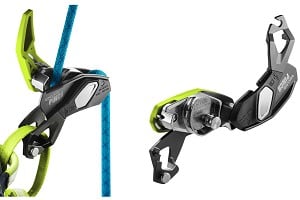
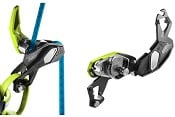
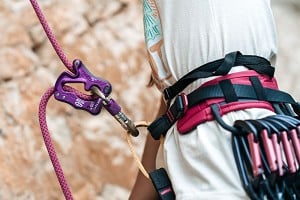
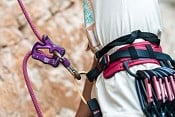
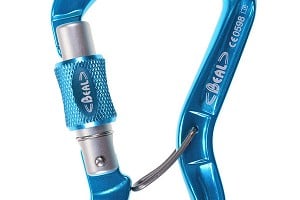
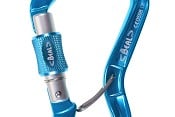
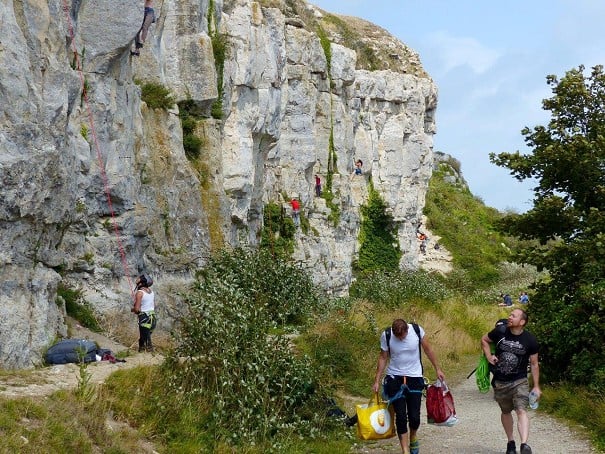
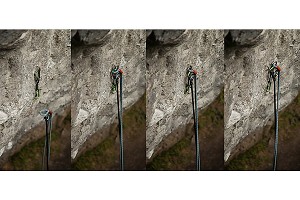
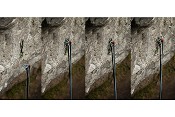
Comments
Rob, the article has a formatting issue in Night mode. "Tim Hill's Experience" is black text on dark grey background. Nice review otherwise!
Thanks for highlighting, I know exactly what I did there - should all be sorted now if you give it a refresh.
Can confirm fixed, ta!
If anyone has experience of this already, could I ask how well it handles lowering?
I've been using the Ohm 2 for a while with my now-12 year old daughter (30kg+ difference) and, while it seems to work well in a fall, when lowering the friction introduced can make it hard for her to lower me, having sometimes to pull the rope through the grigri. Will that be any different with the Ohmega?
A comment on your statement that Edelrid’s Ohm was the very first device of its kind. Unfortunately, this is not correct. As far as I know, the small company Bauer invented the idea of a resistance device in situations of larger weight differences with the "Bauer Zorro". Bauer therefore deserves credit for not only coming up with the idea for such a device, but also for bringing the first device onto the market. However, this should not be taken as a criticism of the Ohmega itself, which seems to be a great product according to this gear review.